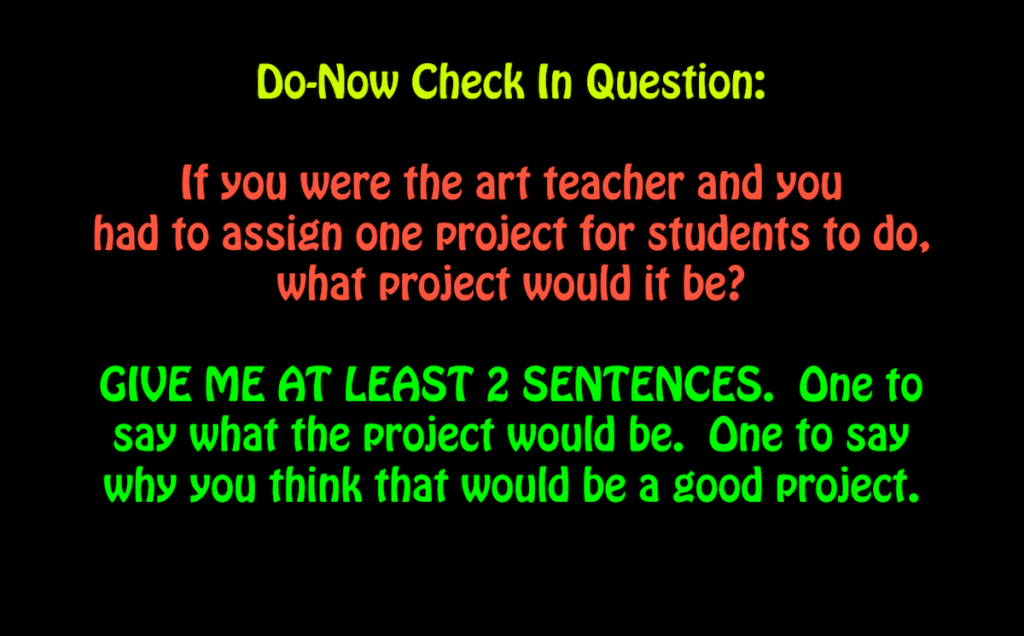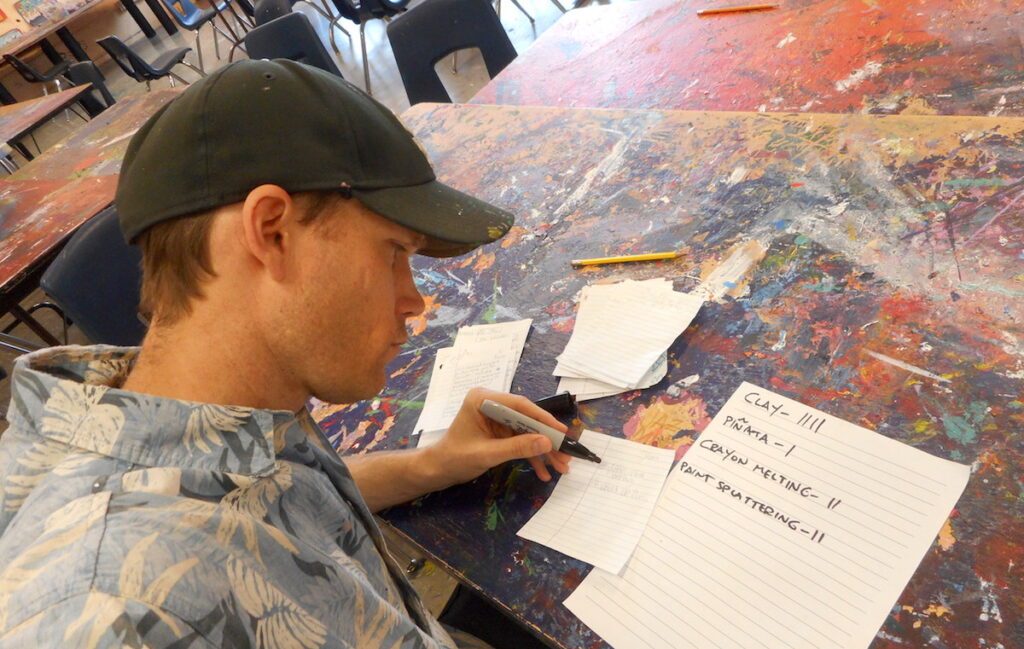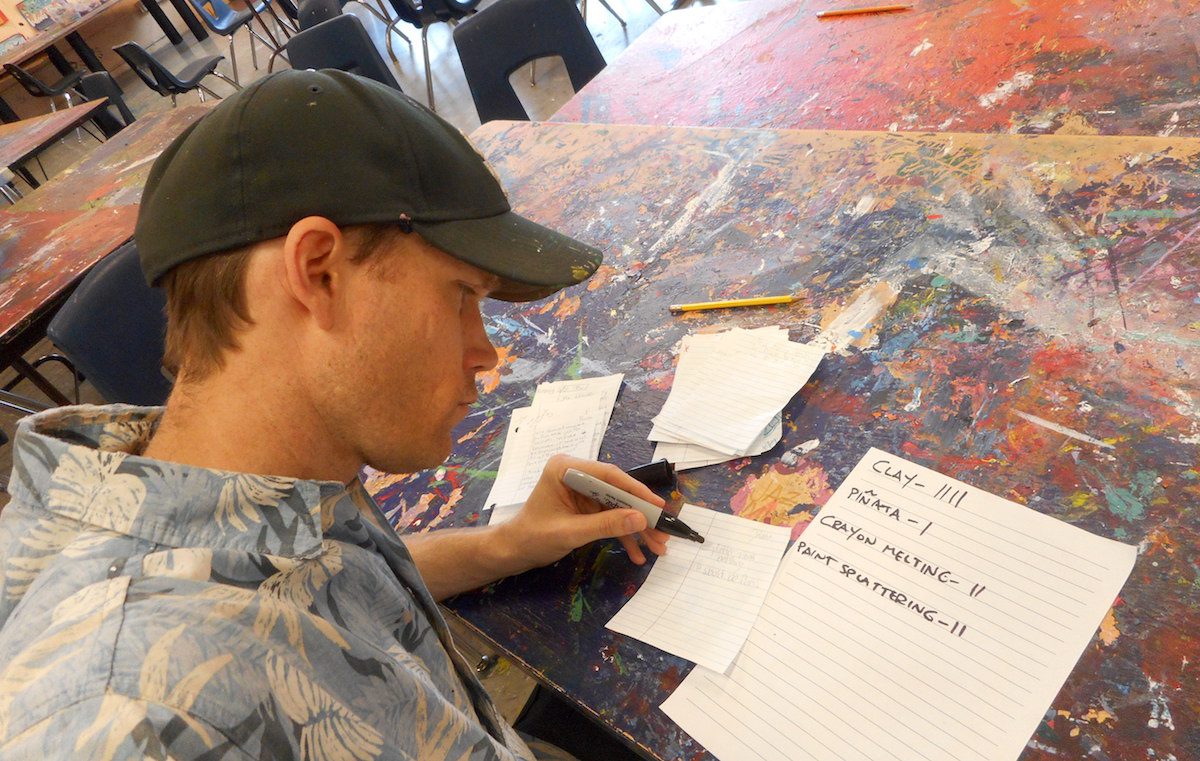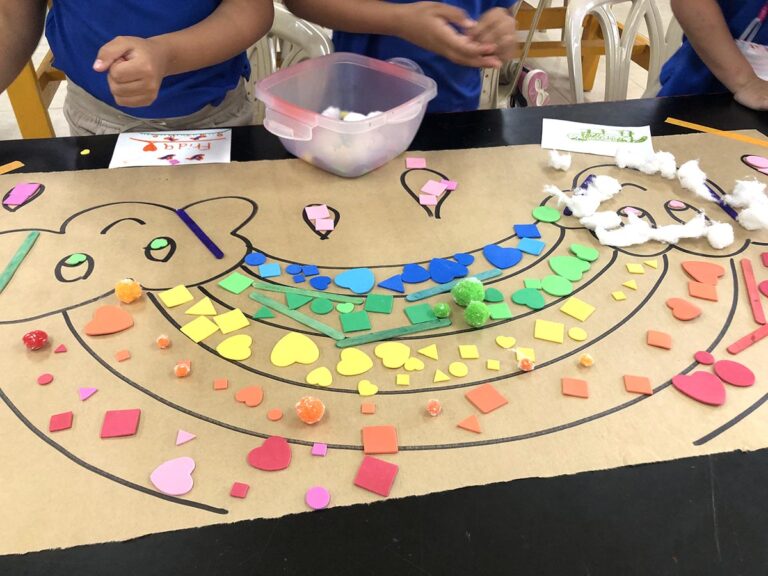Generating feedback is an important practice we strive to instill in our students. For example, during a critique, students give and receive input which can improve each other’s future work. But, have you ever thought about how a student critique might benefit your work as an art educator?
Receiving student feedback about your class is an enlightening way to improve your teaching and your courses. Seeing what students really think about being in your classroom is a great way to shape future instruction so the art room continues to be a place students want to be.
Today I’m sharing some of the best questions you can ask your students as well as some various ways to collect their feedback.

Generating Successful Guiding Questions
In order to receive feedback about our classes, we have to pose questions for our students to answer. Not every student will provide a useful response. However, after asking for feedback about your class at least one significant theme or trend will usually emerge.
Too many questions can reduce student depth and insight. Better data comes from choosing one or two questions and having students explain the reasoning for their answers.
The following list of questions can provide useful feedback:
- If you were the art teacher next year, what is one assignment or project you think every student would enjoy doing? Why do you think students would like it?
- What was one of your favorite assignments in art class this year? What did you like most about the assignment?
- What was one of your least favorite assignments in art class this year? What about that assignment did you not enjoy?
- What ideas do you have to make art class more engaging and interesting for students next year? This could be related to classroom materials, an idea you have to incorporate into our daily routines, an activity, an assignment, or something from another class you have had that would make art even better. Be specific and explain your answer.
- What did you get out of art class this year?
- Did you enjoy art class this year? Why or why not?
3 Ways to Gather Feedback
1. Make it Part of Your Beginning-of-Class Routine
Once you select the focal question to generate feedback, it is time to choose a format for student responses. One effective way to produce feedback is to project one or two questions onto your screen or board, and have students write the answers. Give students a quarter sheet of binder paper to write on as they enter your room. This way, the feedback questions become the “do now” activity to start off class.

Have students reflect on the questions and respond for at least two minutes. Encourage students to respond using complete sentences rather than fragmented words or ideas. Two or three sentences per question provide the best insight.
2. Hold One-on-One Conferences
It is also valuable to have one-on-one conferences with students to generate feedback. One-on-one conferences are perfect for assessment, and in this case, they can be used to assess your art class.
When students come to talk with you during a feedback conference, make sure they have had time to process the questions beforehand. Give students a chance to think through their responses because the nature of the intimate conversation can cause some students to shy away. The benefit of gathering feedback from students in person is that you can hear their response. Sometimes student writing can be brief or incomplete. When students tell you their responses, you can ask clarifying questions, engage in dialogue, and hear their tone which may not surface through a written response.
3. Give a Digital Survey
Another way to gather information about your class is to pose questions to your students in the form of a digital survey. Adults are asked to do this all the time through staff meetings, at conferences, and other convening events. Consider using an easily accessible platform such as Survey Monkey or Google Forms. Be aware you’ll need access to students’ school email addresses to use the former. If your school has lists for particular grade levels or groups of students, you might even be able to save yourself more time. Using Google Forms for this purpose requires no email addresses. Simply have your students fill in their names for “Question 1.”
Evaluating the Data
After reading or discussing all the responses, it can be difficult to know how to digest all of the information. Make a list of responses as they come up and use tally marks to see how many times each response was used. If the question posed was about how to make the class better next year, write the main idea down from each response and begin tallying when students repeat a similar suggestion. That way you can identify patterns and see the most common responses. Often, the repeated responses can lead to a new experiment or direction for the next semester or school year.

Opening yourself up to student feedback truly does have benefits. By giving students a voice in their own education and modeling the critique process outside of an art assignment, students are able to see value in their opinions. Our students have first-hand experience with the material, after all, and can offer up some inspiring ideas! Feedback is essential in all areas of life, and by asking students to help improve our classes they can be a part of that reality.
How do you generate feedback for your classes?
What questions or concerns does this article raise for you?
Magazine articles and podcasts are opinions of professional education contributors and do not necessarily represent the position of the Art of Education University (AOEU) or its academic offerings. Contributors use terms in the way they are most often talked about in the scope of their educational experiences.





